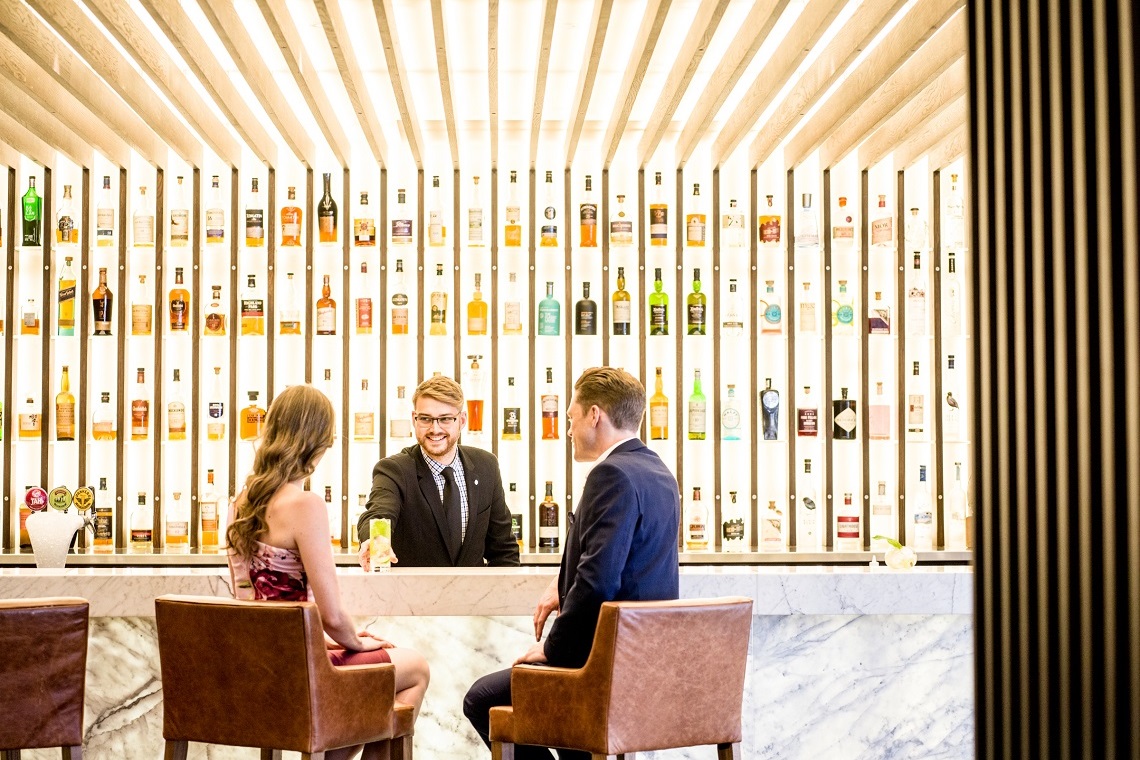The InterContinental Hotels Group have this month revealed the cocktail trends to watch in 2020, according to drinks experts around the world.
The annual Culinary and Cocktail Trends Forecast described a number of trends across the hospitality and drinks industry, ranging from flavours, to alcohol type to ABV, however highlight four key areas for the Australian and New Zealand market.
No alcohol cocktails
The low and no alcohol trend has been gaining significant momentum as of late, increasing demand from consumers for less boozy cocktails.
Bars are already taking note of this, with many including zero ABV classic cocktails on their lists, made with non-alcoholic spirits brands like Seedlip and Lyre’s. Of the bartenders surveyed in the research, 42 per cent of them were excited to embrace no-alcohol culture as part of their overall bar approach in 2020.
InterContinental Sydney’s Cortile Lounge Bar Manager, Max Babajev, created a zero-alcohol cocktail menu that focused on craftsmanship and flavour rather than alcohol content.
“Building balance in a cocktail without alcohol allows creative thinking and a deeper understanding of each ingredient,” Babajev said.
“The culture of overconsumption is changing, and innovative bars and restaurants are beginning to adapt. The modern diner is more educated than ever in their decisions. We are moving away from mass production and focusing on fine produce and skill, which is a positive change for all.”
New takes on coffee
The Espresso Martini is a favourite in Australia, with its kick of coffee and vodka the perfect boost to start a celebration – whether that be happy hour or a special occasion.
Off the back of this success, the report says there will be more demand for coffee to be used in new and exciting ways. Consumers are getting more adventurous when they go to bars, and they’re looking for experiences to match.
An example InterContinental describes is the newly launched High Coffee menu at their Queensland Sanctuary Cove resort. The menu experiments with flavours through innovative techniques, like smokes and aromas.
Gastronomical techniques
Fusing the skills of a bartender and a chef behind the bar is predicted to be a huge trend in the new year, with drinks techniques being influenced by cooking techniques.
Babajev said this is something he’s been pushing for with recent cocktail recipe exploration, to push the boundaries of expected taste and texture.
“Drinking and eating are seen as two individual practices, even though they are often paired,” he said. “Instead we approach this as one experience to discover something more complex and well-rounded. I want to leave guests with a memory lasting long after the final sip.”
One of Babajev’s creations to use this is called the Treasury Martinez. A twist on the traditional Martinez (forefather to the Martini), it’s named after the Treasury Building where InterContinental Sydney now stands. Served with a hand-chiselled gold lead dressed ice cube and gold dusted lychee beads, each part of the drink is crafted using culinary techniques which balances bold flavours and challenges the senses.
Local ingredients
A connection to the local environment is a trend that in recent years has taken off across many different industries, hospitality and drinks included. Consumers are enjoying cocktails created with locally produced spirits, mixed with other locally grown ingredients.
This is something that Levi Kenny, Bar Manager at InterContinental Wellington, said is increasingly common among international travellers.
Kenny said: “International travellers visiting Wellington want the familiarity of a classic cocktail yet want to indulge in the local tastes. We provide a taste of the region by crafting classic cocktails using local spirits – allowing guests to explore in comfort.”
Outside of cocktails, the local product and low and no alcohol product trends are also predicted to be big in bars. In terms of category, alcoholic kombuchas and hard seltzers have been tipped to be rising trends.

